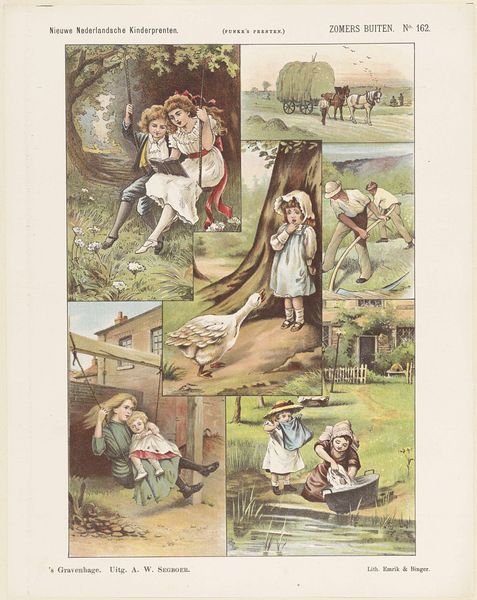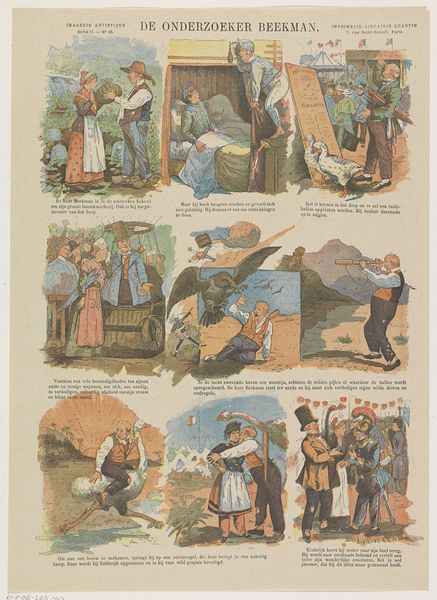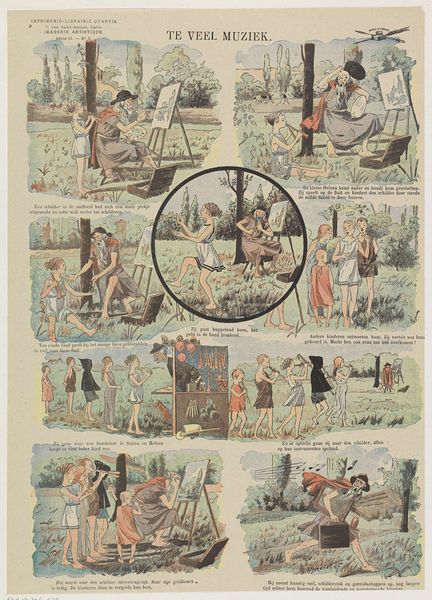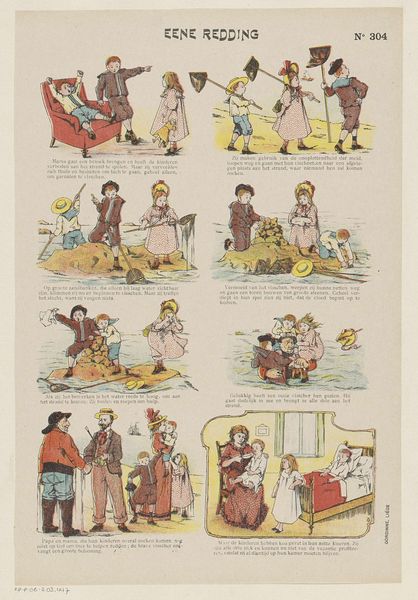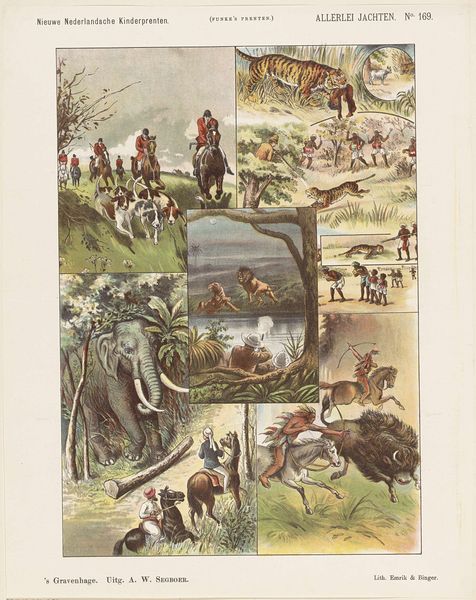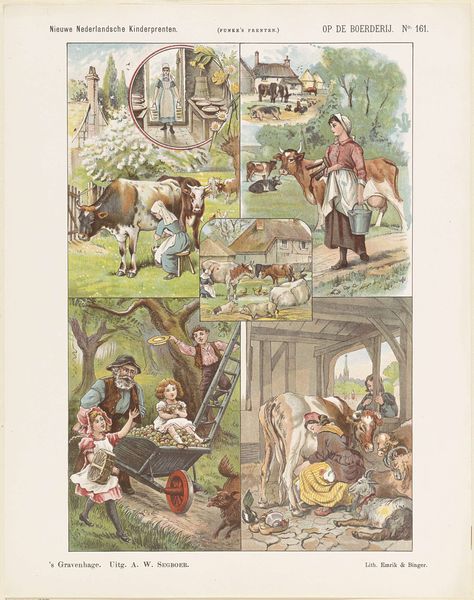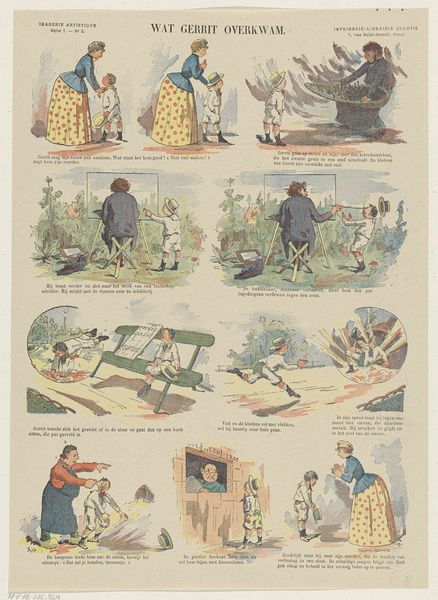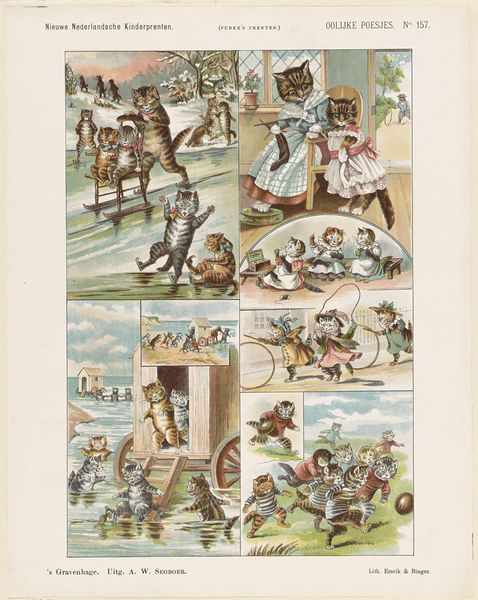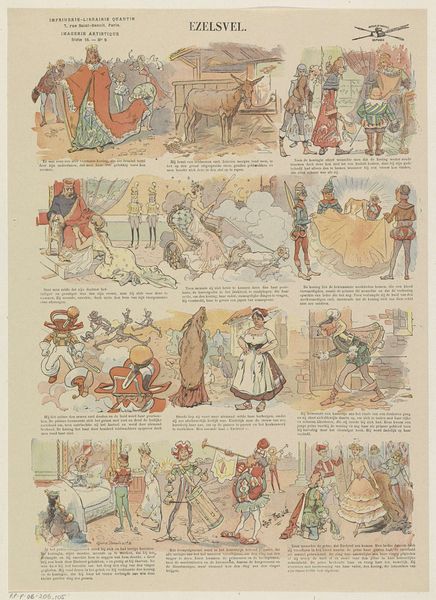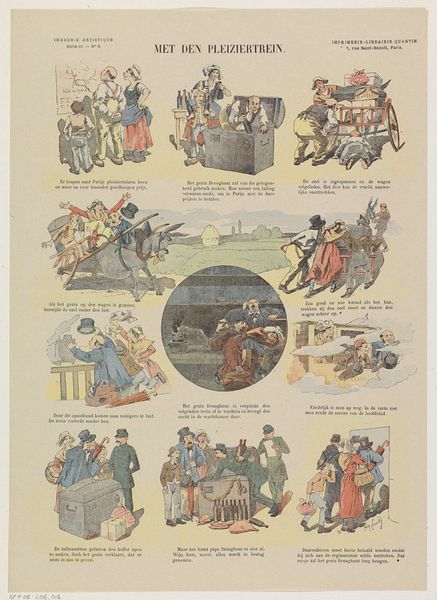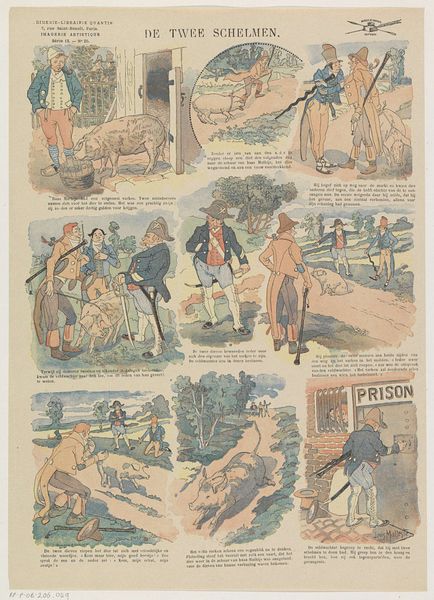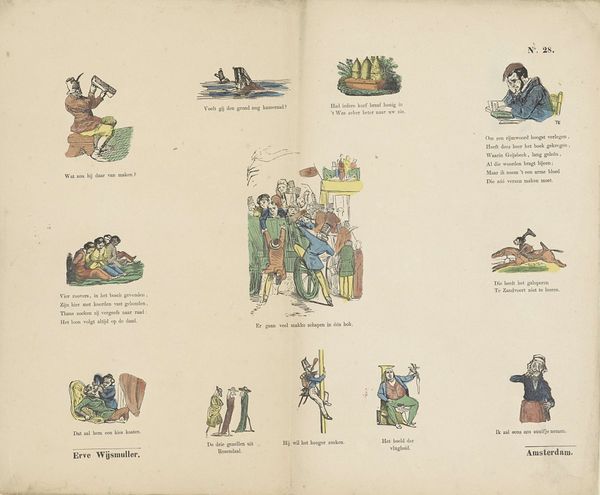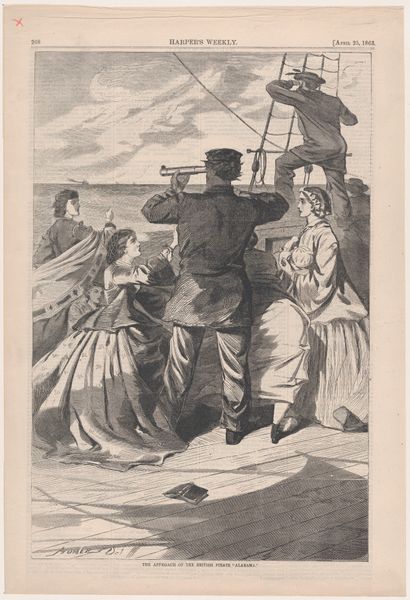
# print
#
landscape
#
naïve-art
#
genre-painting
Dimensions: height 439 mm, width 346 mm
Copyright: Rijks Museum: Open Domain
Curator: This print, titled "Aan het strand," which translates to "On the beach," comes to us from between 1903 and 1919. Arie Willem Segboer is the artist who conceived this colorful composition. What strikes you most when you look at it? Editor: Initially, I'm drawn to the almost storybook quality, like frames from a children's book. There's an innocent and cheerful feeling, reminiscent of simpler times, though, I admit, this simplicity likely comes at the cost of historical complexities. Curator: Indeed. What I find particularly compelling is the lithographic process at play here. It allowed for the mass production of prints like this, bringing images into the homes of ordinary families. We can see that there were publishers and printers also contributing to this kind of printmaking practice as the signature on the bottom says ‘lith. Emrik & Binger’. Think about the labor involved, the social function of these prints, intended for visual education, perhaps? Editor: That is something that stood out for me as well, that this kind of artwork, which represents children’s leisure was intended for other children. When you think about this artwork in the historical context of child labor from around this time, then you could explore a fascinating contrast. I also find myself wondering about representation here: Who has access to leisurely activities depicted in these scenes, and who is excluded from them? Curator: Precisely. And looking closer at Segboer's depiction of labor—not just the production of the print, but also the implicit work of childcare, the maintenance of societal norms—brings us back to the materiality of childhood itself. What sort of work, what materials and activities would middle and upper class children had contact with? And what that means for the formation of the child? Editor: The central framing circle focuses on children actively participating in this work and labor as they’re playing games, building sandcastles, digging or running into the sea. It's about the construction of both childhood and class identity, using beach play as its medium. It asks us who benefits from the picturesque innocence on display? Curator: It's a confluence of visual culture, labor history, and the construction of childhood identity—a seemingly simple print with layers to unpack. Editor: Absolutely, what starts as an appealing scene transforms into something much more nuanced with thoughtful consideration.
Comments
No comments
Be the first to comment and join the conversation on the ultimate creative platform.
